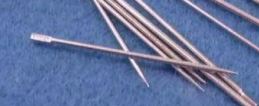-
Lohff & Pfeiffer
About Lohff & Pfeiffer
Iimprint
Contact
Newsletter
Location
L&P team
- Instruments
General
Trade options
About clarinet
Search specific instrument
Ab-clarinet
Eb-clarinet
D-clarinet
C-clarinet
Bb-clarinet
A-clarinet
Mozart basset-clarinet A
G-clarinet
Bassethorn F
Alto-clarinet Eb
Bass-clarinet
Contraalto Eb-clarinet
Contrabasse Bb-clarinet
German-Albert system Bb
Reform Boehm A & Bb
Peter Bastian Instruments
Plateau clarinets
Quartertone clarinet
- L&P Optimization
Optimization
Customization
Specialities
Special Keywork
- Accessories
General
Care products
For instruments
Reeds
Tools for reeds
Straps and hand rests
- Repair
Book time
About Repair
Maintenance
Plating-Surface treatment
Pads
Padding style
Cracks
Tone hole problems
Joints
- Tips & Advice
How to..
Videos
Worldwide external information
Problems & help
Education & learning

.Springs
The springs are responsible for the fast and effortless movement of the keys and their accurate correspondence. We distinguish between 3 types
1. Needle-springs: They are round and are pressed into the posts. The tip is tapered to reduce the resistance and to give it more flexibility. They can easily be adjusted in strength by bending and work very fast with little resistance. The only thing you need to be aware of when you take an instrument apart is not to break them or to stick them into your fingers.
2. Flat springs, are screwed onto the bottom of the keys or into the bottom of the wood pressing a key open. They are the preferred springs for the A and side keys on the clarinet. They are also easy to adjust but will give some more sliding resistance. In some cases, particularly with the A key, they can dig themselves either into the wood or the counter spring, which can cause a malfunction of the A key. read more
Another problem can occur when they get rusty. This can also prevent them from sliding. If that happens, remove the corrosion and if they slide on top of another steel spring or plate, the best solution is to replace the bottom spring to one in bronze.
3. Coil-springs or spiral springs were used by the German manufacturer Kohlert and by Backun. We found them hard to adjust and difficult to work with.
They are available in several materials
1. Steel springs have a chance of getting rusty and might finally break.
2. Blue steel springs have been treated with a corrosion protective process to prevent them from breaking. Nevertheless, it might happen. Besides that, they are very responsive and easily adjustable.
3. Bronze springs are like gold springs - non-corrosive. Their spring elasticity is less vibrant than steel. If you have problems with corrosion, they are a perfect solution.
4. Gold: Expensive but very nice to work with, as long as the keys are not too heavy. The touch is soft. Since gold can't corrode are they extremely long-lasting.
5. Stainless steel or piano wire springs are cylindrical all the way. This causes less flexibility and harder tension.
Attention: Keeping your springs always either greased or oiled will help to prevent them from breaking.
Alternatively, springs as magnet systems are available. Spring problems
If you encounter any problems read more
Help us to get better
Was this article helpful?
Comments, additions or questions are always welcome at: info@clarinet.dk(C)2011 - by Lohff & Pfeiffer USA-6220 Rhode Island Ave-Riverdale Park MD 20737 - USA - Phone: (812) 340-0595 & 415 470 6879 - info@clarinet.dk - Instruments






